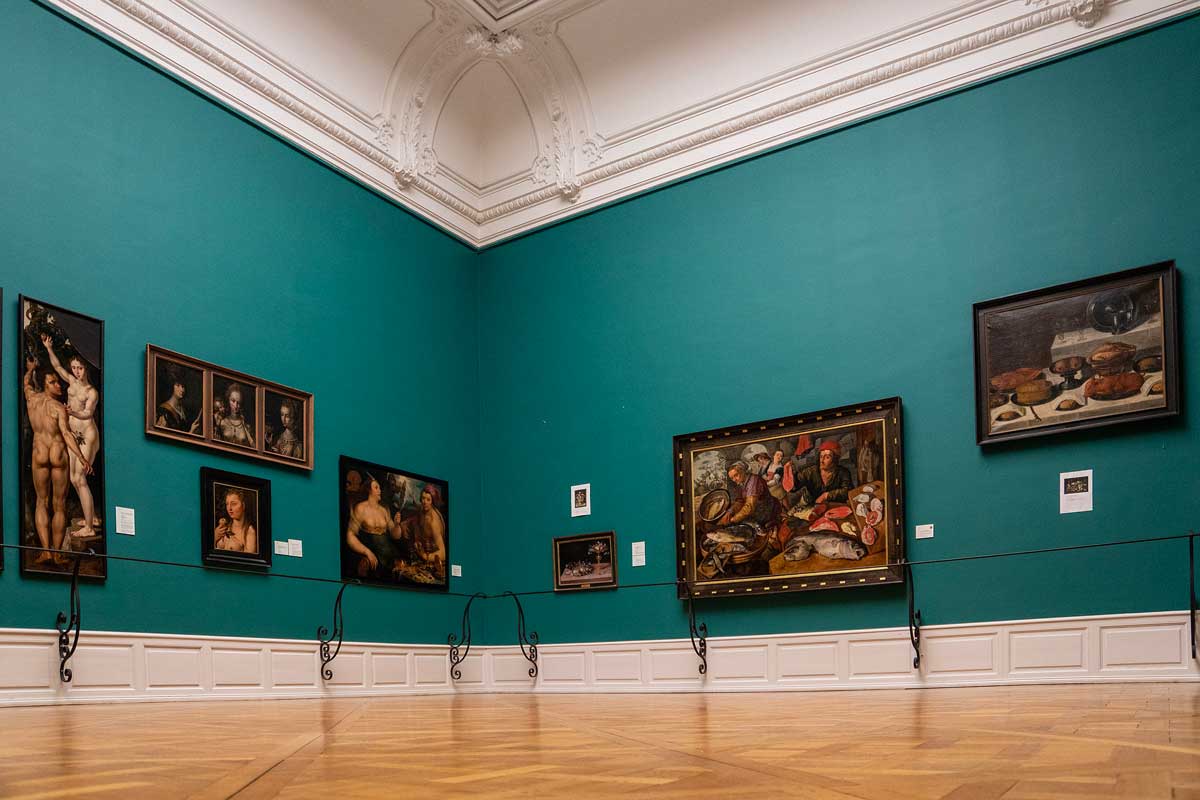Housed in the magnificent Palais Rohan, Strasbourg's Musée des Beaux-Arts is a particularly renowned venue for art lovers. I've never visited it before because I have to confess that I'm not a big fan of this type of museum, mainly because of the predominance of religious paintings and still lifes.
However, I had long wanted to visit this museum, attracted by certain famous works such as "La belle Strasbourgeoise". I took advantage of the 1st Sunday of the month, when admission is free, to finally take the plunge with my daughter, who had borrowed the book "Suivez le guide au musée des beaux-arts de Strasbourg" specially written for children. So, is it worth it or not?
A museum rich in works of art in the Palais Rohan
Located in the left wing of the Palais Rohan, Strasbourg's fine arts museum was founded in 1890. Today it houses an impressive collection of masterpieces that bear witness to the exceptional artistic wealth of the region and of Europe as a whole.
A visit to the Musée des Beaux-Arts de Strasbourg will reveal a veritable treasure trove: paintings by renowned artists such as Botticelli, Raphael, Rubens, Van Dyck, Delacroix and Courbet.
To begin our visit, we asked at reception if there was a short guide for children. We took the booklet "Une première visite au Musée des Beaux-Arts" (I'm not sure if they have an english version), which gives advice and explains 6 masterpieces from the collection. It's a great way to get started and discover the museum. Don't forget to ask for it, it's free. With the famous book borrowed by my daughter, we organized our visit around the key works we wanted to see.
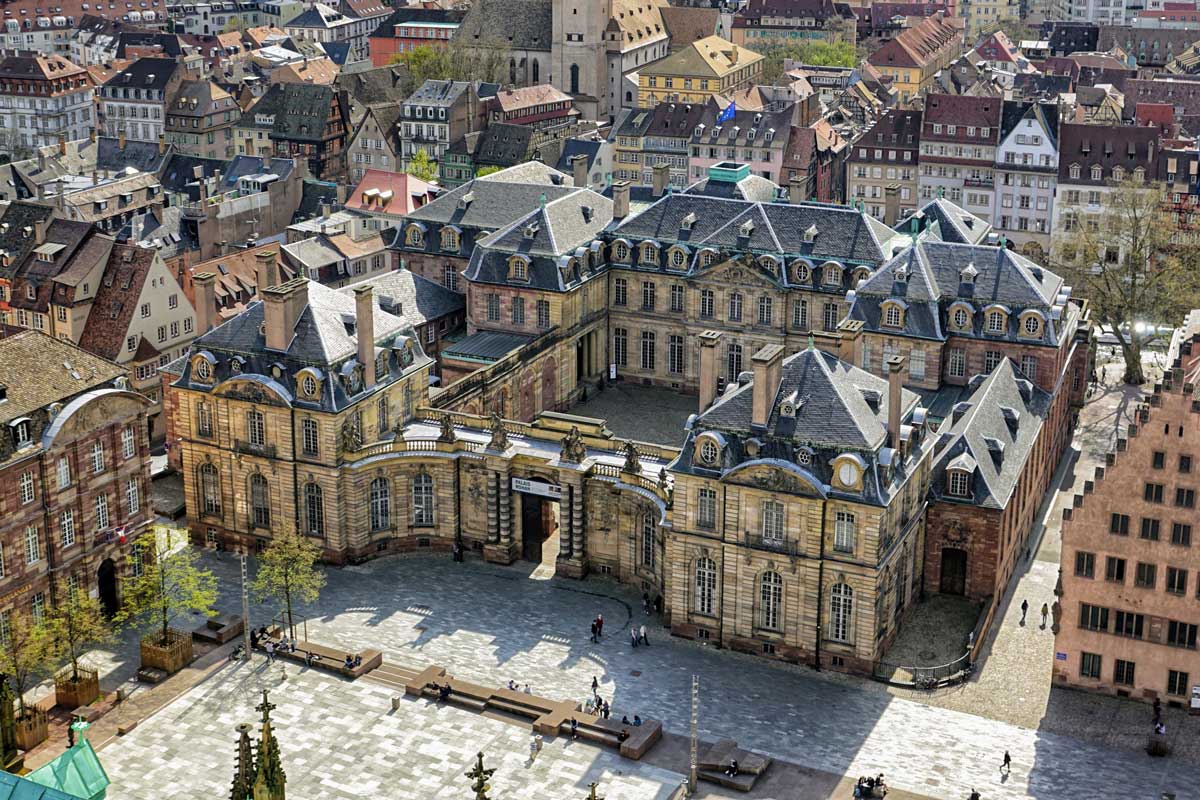
The chronological tour: an immersion in the history of painting
A visit to Strasbourg's Museum of Fine Arts is organized around a chronological tour that takes visitors through the centuries and reveals the development of painting through the ages. The museum presents a selection of works from the Middle Ages to the 19th century, grouped by period and artistic movement. You can admire works by the Italian and Flemish primitives, the Renaissance, the Baroque, Romanticism and Impressionism.
The collections complement those of the Musée de l'Œuvre Notre-Dame for the Middle Ages and the Renaissance, and those of the Museum of Modern and Contemporary Art et Contemporain for 20th-century works.
Giotto's Crucifixion
We begin our visit in the first rooms with Giotto's painting entitled "The Crucifixion". This visually striking masterpiece occupies a central place in medieval art, with Jesus, tall and imposing, dominating the centre, illustrating the hierarchical importance of the figures in medieval art. At the foot of the cross, in contemplation, is Mary Magdalene. On the left, the Virgin Mary is consoled by the holy women, while on the right, Saint John, in pink, observes the scene with sadness.
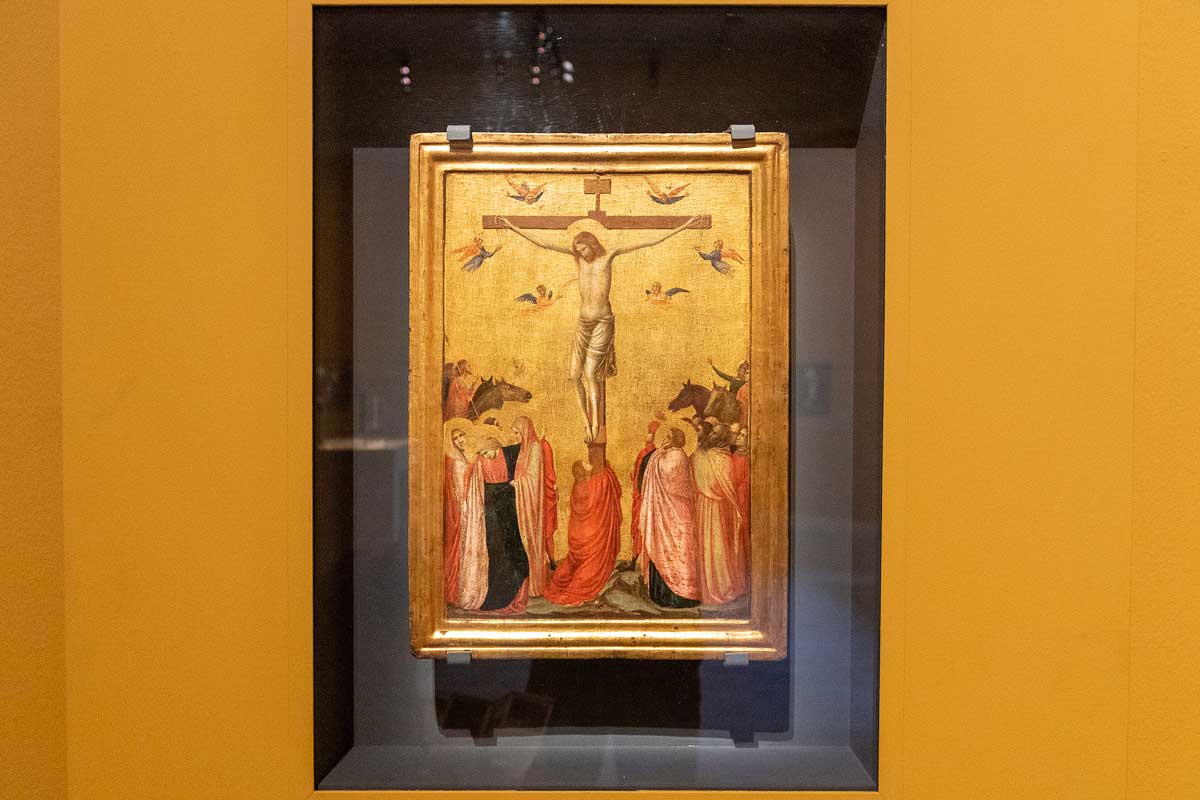
And look at the horsemen in the distance, painted in a smaller style to give an impression of distance. It was here that Giotto inaugurated the use of perspective, a technique that paved the way for modernity in art. But Giotto's innovations did not stop there. His attention to the expression of pain on faces and the realism of the representation of the body was revolutionary for its time. He captured agony, sadness and grief so realistically that it still affects us today.
A portrait of a young woman by Raphaël
We continue our visit with a portrait of a young woman by the Italian artist Raphael. The woman's face is painted perfectly smooth and luminous, embodying the painter's ideal of beauty. This ethereal, almost divine representation of femininity is distinguished by its delicacy and light, making this work a timeless masterpiece.
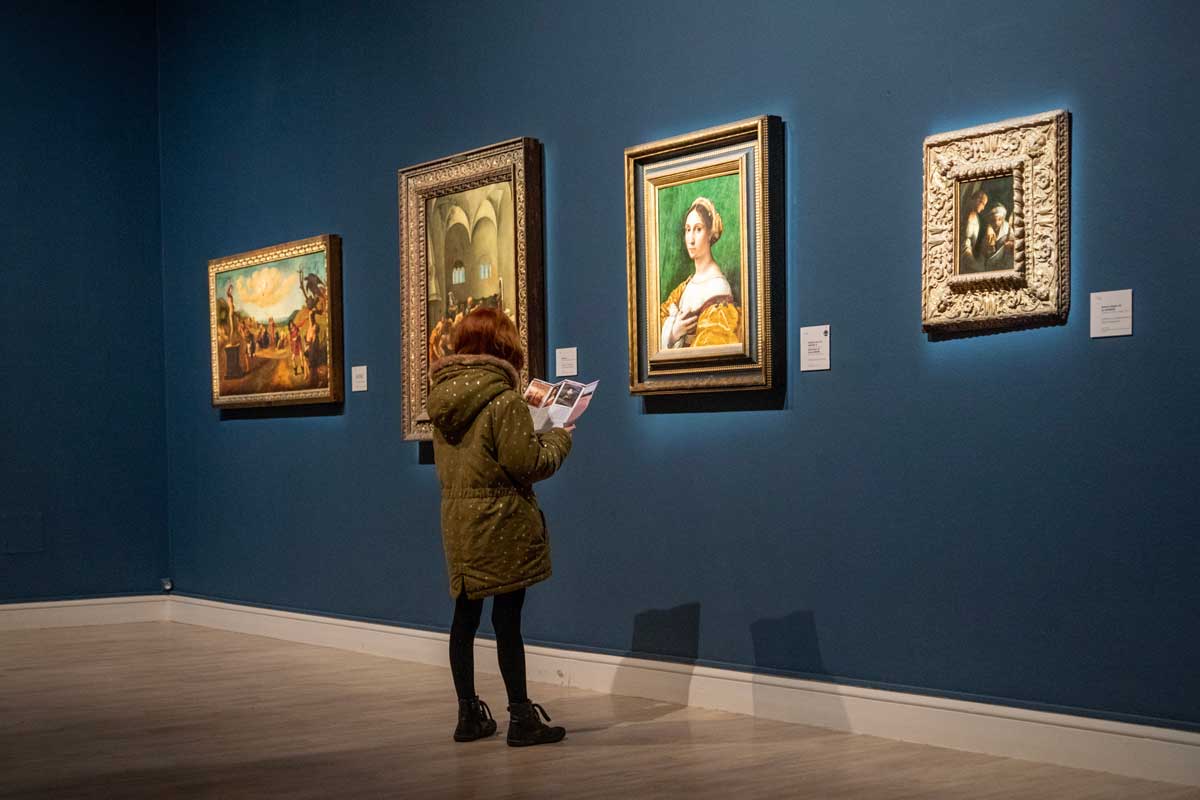
However, "Portrait of a Woman" is also imbued with mystery. The identity of the woman depicted remains unknown, lost over the centuries. Her gesture, too, evokes several interpretations - is it a sign of modesty, sensuality, or the gesture of a wife who has become a mother? What's more, it raises an artistic enigma: why did Raphael choose to paint the face and the hand so differently? These are questions that my daughter had fun answering.
La belle Strasbourgeoise by Nicolas de Largillière
This brings us to the main objective of our visit: to see the painting La Belle Strasbourgeoise for real. It depicts an elegant woman dressed in the Strasbourg fashion of the time of Louis XIV. Largillière's attention to detail is astonishing. We can see the different effects of materials such as satin, lace and ribbons that make up her costume. The sharpness of the details is accentuated by the blurring of the landscape in the background, further highlighting the elegance of the lady's costume. The pearl necklace and the dog accompanying the lady confirm her high social status.
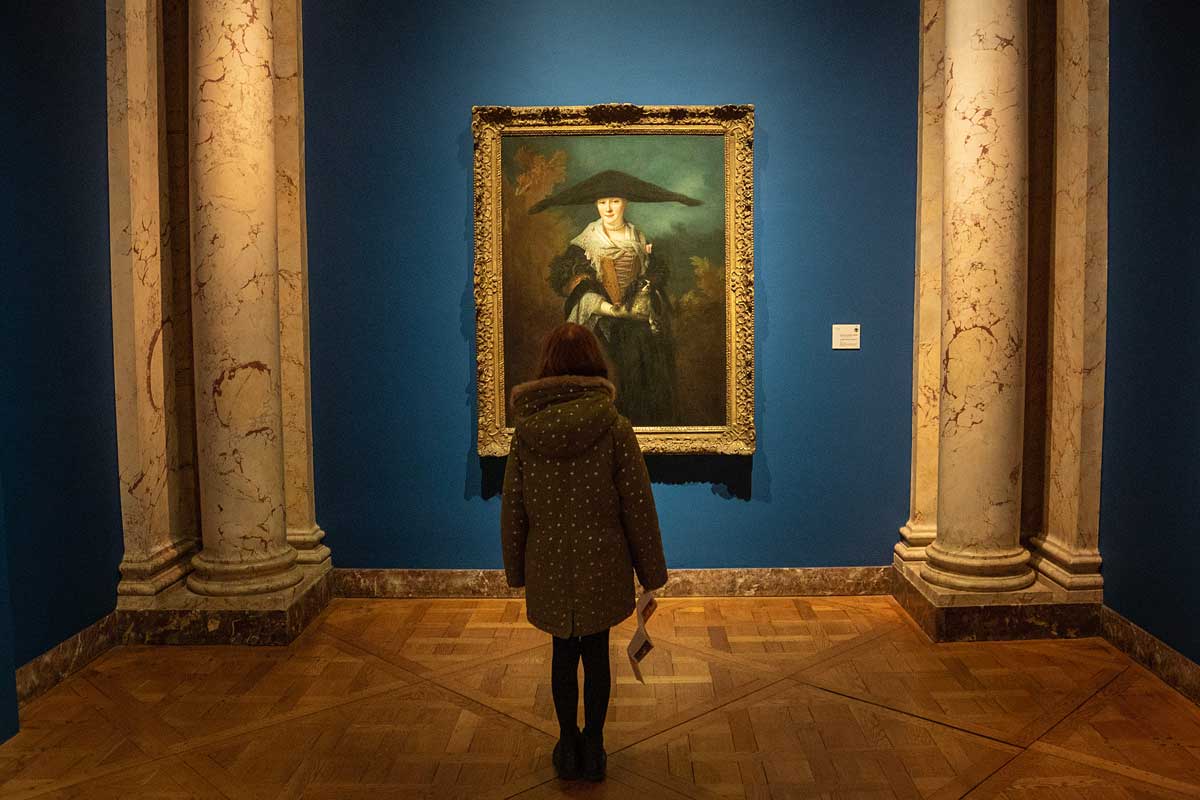
This painting is like our very own Mona Lisa. This unknown woman embodies both mystery and beauty, just like Leonardo da Vinci's work.
The Loue Valley by Gustave Courbet
We end our visit with a painting by the Franc-Comtois artist (a region south of Alsace) Gustave Courbet. It depicts a dramatic and majestic landscape, with a stormy sky illuminating the limestone cliffs, guiding our eyes towards the heart of the Loue valley. Courbet, as the founding master of realist painting, had a strong conviction: to paint a landscape sincerely, you need to know it intimately. So he chose to paint his native region, a place he knew well and was passionate about. It's also the region where I was born, and I did part of my schooling at a school called Courbet. I'm delighted to have been able to see this painting and talk about it with my daughter.
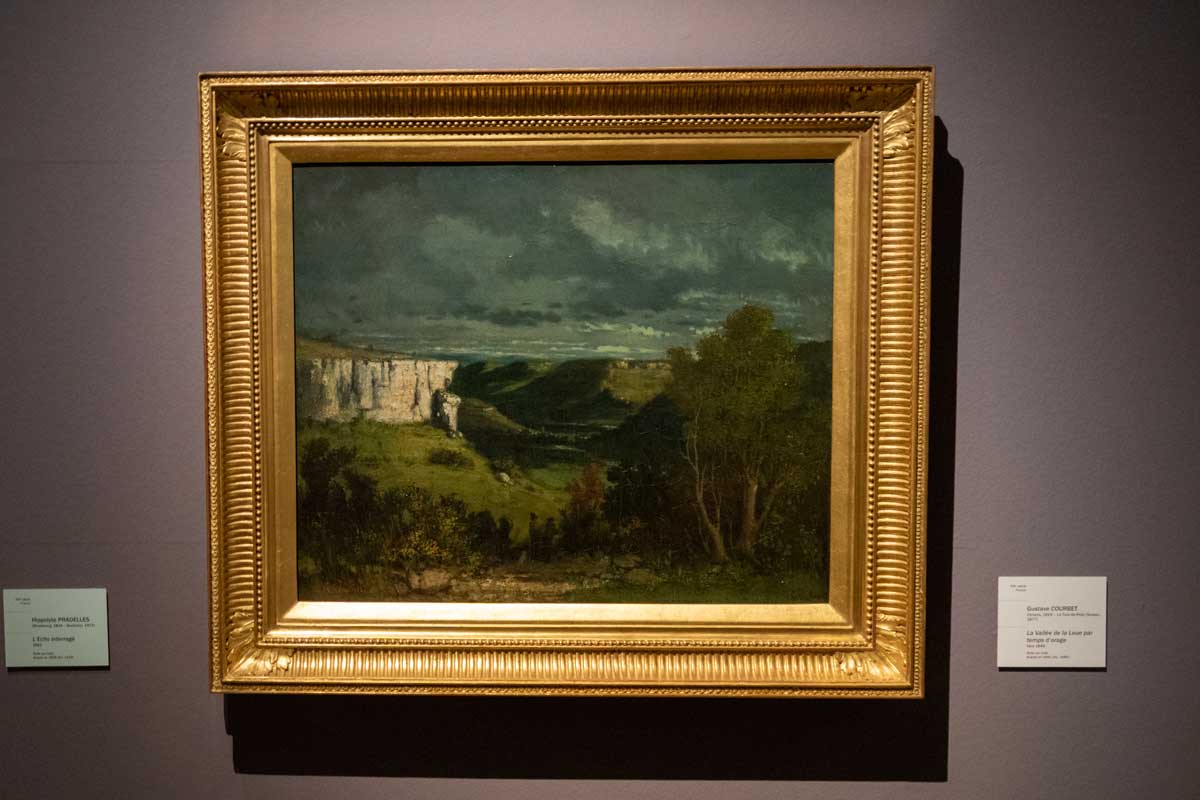
My opinion of the Strasbourg Museum of Fine Arts
I'm still not much of a classical art lover, but I really enjoyed my visit and the relaxed approach of the Museum. It made me feel at ease, not least thanks to its booklet, which encourages you to focus only on the works that appeal to you personally.
The rooms are beautiful, bright and colourful, and each piece is arranged in such a way as to highlight its individuality. The museum remains fairly traditional and not very interactive, but the additional resources available at the entrance, in particular the "First Visit" booklet, make the works accessible, even for young visitors.
A few tips to prepare for your visit
To make the most of your visit to Strasbourg's Musée des Beaux-Arts, here are a few practical tips:
- If you are planning to visit several of the city's museums, in particular the Archaeological Museum or the Museum of Decorative Arts, both located in the Palais Rohan, I recommend that you take the 1-Day Museum Pass, available from the museum ticket office.
- Visits to the museum are free on the 1st Sunday of each month and during "Journées du Patrimoine". On the other hand, it's a bit more crowded.
- The Strasbourg City Card gives you a 50% discount on the normal admission price. The pass also gives you discounts for 7 days on many other visits and activities.

